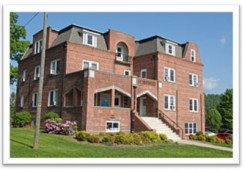I was in the news today. Star Tribune did an article about high school visits sponsored by the Adoption Option Council.. It is not affiliated with any religious or political organization but strives to educate high school students about options when faced with an unplanned pregnancy.
http://www.startribune.com/minnesota-teens-get-new-perspective-on-adoption/305521701/

In general health class at Park High School in Cottage Grove, Barb LeCuyer of New Prague talked about her experiences as a birth mom .
Students who passed it from desk to desk seemed to handle it with reverence, glancing from the baby pictures to the 33-year-old communications executive standing in front of them.
“That’s my son,” Gillen said. “And his mother and father.”
Gillen is a volunteer with the Adoption Option Council of Minnesota (AOCM), an adoption advocacy nonprofit that sends panels of speakers — birth parents, adoptive parents, adoptees — into high schools. While AOCM has no political or religious affiliation, it does have a goal — to put adoption on the list of choices that young people might contemplate should they experience an unplanned pregnancy.
“Adoption has been mysterious in the past. We want students to see it for what it is today,” said Jenny Eldredge, AOCM executive director and the adoptive mother of two. “If a student or one of their friends would have a pregnancy before they can parent, our hope is they’ll have a realistic idea of what adoption looks like after hearing these stories.”
Getting birth parents to consider adoption is an uphill battle today. With greater access to contraception and abortion and a reduced social stigma for single parenting, fewer babies are available for adoption.


Fifty years ago, 95 percent of unmarried teen mothers placed their children for adoption, according to statistics cited by the Planned Parenthood Federation. Today, just 2 to 3 percent do. In addition, the number of teen births in Minnesota has fallen steadily — and steeply. According to the Minnesota Health Statistics Report, the number of teen pregnancies fell by 40 percent between 1991 and 2010.
“Over a lifetime, adoption touches many people. This effort lays the groundwork for adoption; it normalizes the process,” said Heidi Wiste, director of social work for Lutheran Social Service and Children’s Home Society. The combined agencies have assisted with adoptions for a century and a half. “Today, tomorrow or someday, this information may be relevant.”
Gillen is a frequent speaker for the AOCM, sharing the story of the pregnancy she kept hidden for months and the baby she bore as a college freshman. Through open adoption, Gillen picked the child’s parents, who live on a farm in a rural part of the state.
“We’ve been in touch from the start, and he’s 14 now. We have a few visits a year and exchange pictures and talk on the phone on his birthday and holidays,” she told the class. “He has a close family, and I was able to finish school and pursue my goals.”
The panel that visited Park High provided a living example of how adoption has changed radically in one generation.
A new attitude
Judy Liautaud was seated at the front of the class, next to Gillen. When Liautaud found herself pregnant at 16 in 1966, her family manufactured a fake kidney condition for her and sent her to a maternity home 100 miles away. She never touched the baby girl she delivered there. The baby went straight to adoptive parents.
“She was so beautiful, so perfect,” Liautaud told the class. “I didn’t hold her because I was afraid I’d never let go.”
The daughter was 26 when Liautaud finally met her.
“She’d had a happy life, and I saw I’d done a wonderful thing,” she said. “I had been filled with shame for most of my adult life and I was finally able to heal.”
The modern adoption story that Kim Haugen shared stood in stark contrast to Liautaud’s. After six lost pregnancies, Haugen and her husband pursued adoption.
“The birth parents who chose us went to school right here at Park,” she told the class. “We met the mother for the first time at the Woodbury Applebee’s and it felt like a fit. Twelve days later our son was born.”
The boy is now 2. His adoption was finalized without scandal or secrets.
“We all still hang out with her all the time; we have a picture of all of us together in his room. It’s great,” Haugen said. “She’s the most selfless person I ever met.”
Surprising stories
While the panel varies, the talk is always frank. The narratives invariably start with impulsive sexual encounters, followed by secret pregnancies and anguished decision-making.
Park High senior Emily Fursco sat in the front row, sometimes shaking her head as she listened.
“We need to know about this,” said Fursco, 18. “This was all new to me. I was surprised by the stories.”
Heather Phillips, who teaches in the Family and Consumer Science Department at Minnetonka High School, brings the AOCM volunteers in every semester.
“These people are authentic. They talk about one of the toughest experiences of their lives and disclose it to 30 young strangers. My kids respect that vulnerability,” she said. “You can practically see them thinking about these difficult choices.”
This school year, AOCM panels made presentations at 110 schools in 33 districts. Most are in the Twin Cities, but volunteers have also visited classrooms in Rochester, Mankato, Litchfield and Hudson, Wis. A 33-minute video version is available for districts in outstate Minnesota.
The focus of the panels continues to be on young parents, but it’s not just teens who find themselves with unplanned pregnancies. A report by the Adoption Institute noted that only one-fourth of birth parents choosing adoption today are teenagers; most are in their early 20s. AOCM’s research on Minnesota birth mothers finds their average age at the time of delivery is 23.
“We never know when someone down the line may reflect back on what they’ve heard,” said Eldredge. “We want their eyes wide open.”
Kevyn Burger is a freelance writer and newscaster at BringMeTheNews.com.





Recent Comments